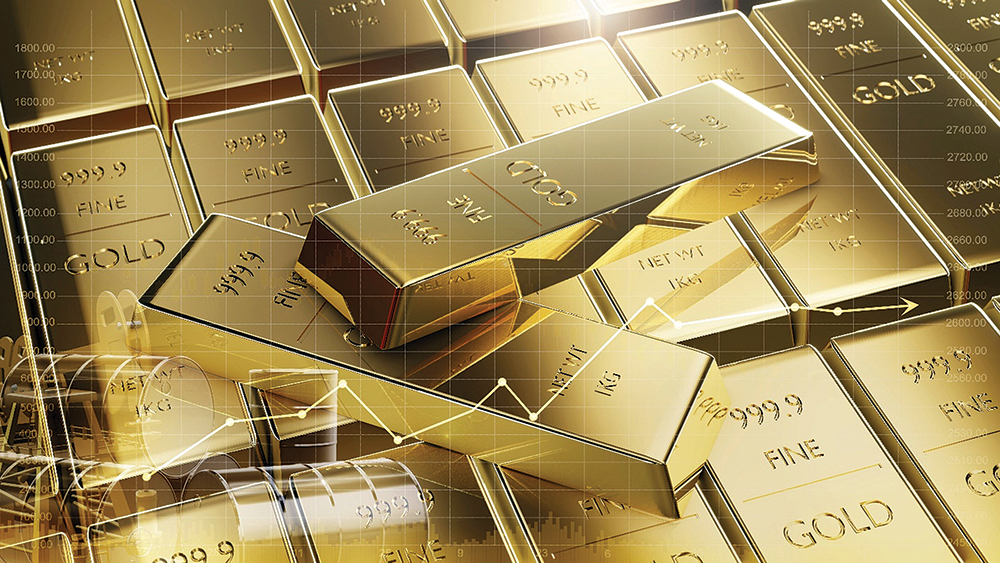
Gold treaded an interesting journey in 2022. On the back of the Russia-Ukraine conflict, the bullion rose to $2,070.16 per ounce in March before observing seven consecutive months in bearish territory reaching $1,614.61 per ounce in September. However, prices reversed and closed the year on bullish grounds at $1,823.26 per ounce. In hindsight, the value of gold has increased by over $300 per ounce since hitting the lows of 2022. Analysts opine that the values have been range-bound since the summer of 2020. For the past few years, gold has been unable to break past the resistance level of $2,075 per ounce. Hence the question arises: Will the rally of gold continue in 2023 and thereby have a significant breakout that all traders are looking for or will the bullion remain range-bound?
The range-bound performance of gold has been staggering in the recent few years. Being coined as a perfect hedge against inflation, traders believed that the yellow metal could have rallied strongly as inflation surged. However, as inflation climbed from 1.3% in 2020 to above 9% by mid-2022, the value of gold traded sideways. But assuming that gold no longer serves as an inflation hedge might be pushing the envelope too far. From the spring of 2019 to the summer of 2020, the price of gold rallied by nearly 60% as the US Federal Reserve began easing its monetary policy stance, deliberately slow at first and then in grand fashion in March 2020 by cutting the rates to zero and embarking on what would be known as the $4.9 trillion quantitative easing programme. It would be appropriate to say that gold traders anticipated the high rates of inflation that came about in the two years after its rally ended. The rise in inflation in 2021 and 2022 created a problem for traders in gold. On the one hand, higher inflation meant that the dollar and other currencies will be able to buy less of real assets such as precious metals. On the contrary, once central banks came around to the idea that the surge in inflation was not transitory, they began tightening monetary policy at the most rapid stride since 1981. The higher the interest rates, the lower the appeal of gold. As a central bank reserve asset, the bullion is still a de-facto global currency with no interest bearing. As central banks around the world raise interest rates and reduce the size of their balance sheets, most global currencies including the US dollar will appear more attractive compared to gold despite the higher rates of inflation.
Gold has observed a consistent negative correlation with the daily changes in the expectations for where the Fed’s policy rate might have been in two years as priced by the Fed’s funds rate. With the market expected to lower the Fed funds rates in 2019 and early 2020, the prices of gold skyrocketed. In late 2020 and 2021, the markets inferred that the Fed could not follow Europe and Japan with negative rates and gold prices stopped climbing. During 2022, as expectations shifted towards the fastest pace of Fed rate hikes in more than four decades, gold prices fell for the majority of the year. The million-dollar question is then so what changed in the last three months of 2022? Market pundits opined that two factors contributed to the rally of gold. The markets first concluded that the Fed might show restraint with its rate hikes and it might inevitably start cutting the rates in late 2023 and 2024. With the New Year, Fed funds futures priced 200 basis points of rate cuts beginning in the second half of 2023. As markets began to factor in the eventual Fed rate cuts, gold prices rallied. The second factor that contributed to the rally of gold was the US dollar. The Federal Reserve went ahead of the other major central banks in its policy tightening in mid-2022. This influenced the US dollar and sent it soaring against the euro, yen, pound and bullion. However, as the Fed signalled a slower pace of rate hikes in the last quarter and as other central banks picked up the pace of their tightening, USD began to sell off versus other currencies. A weaker greenback tends to enhance the prices of gold which have displayed a consistent and negative correlation over the past decade. Gold’s ability to rally to its high of $2,080 per ounce or beyond depends on the following factors. Will the central bank of the USA cut the rates by 200 basis points or more starting later this year or will higher-than-expected inflation prevent policy easing? Also, will the US dollar continue to sell off versus the foreign currencies or will the greenback come back stronger and rebound? If the current levels of inflation persist, it would be a double-edged sword for gold. On one hand, gold will benefit from the USD which is depreciating against other fixed assets. On the other hand, the higher-than-expected inflation could prevent the Fed from cutting the rates in the manner that the interest rates markets and the bullion have incorporated into their pricing. Whatever the outcome, it would be yet another interesting year in 2023 given the headwinds and tailwinds of factors emerging in the ensuing days. READ ALSO:






